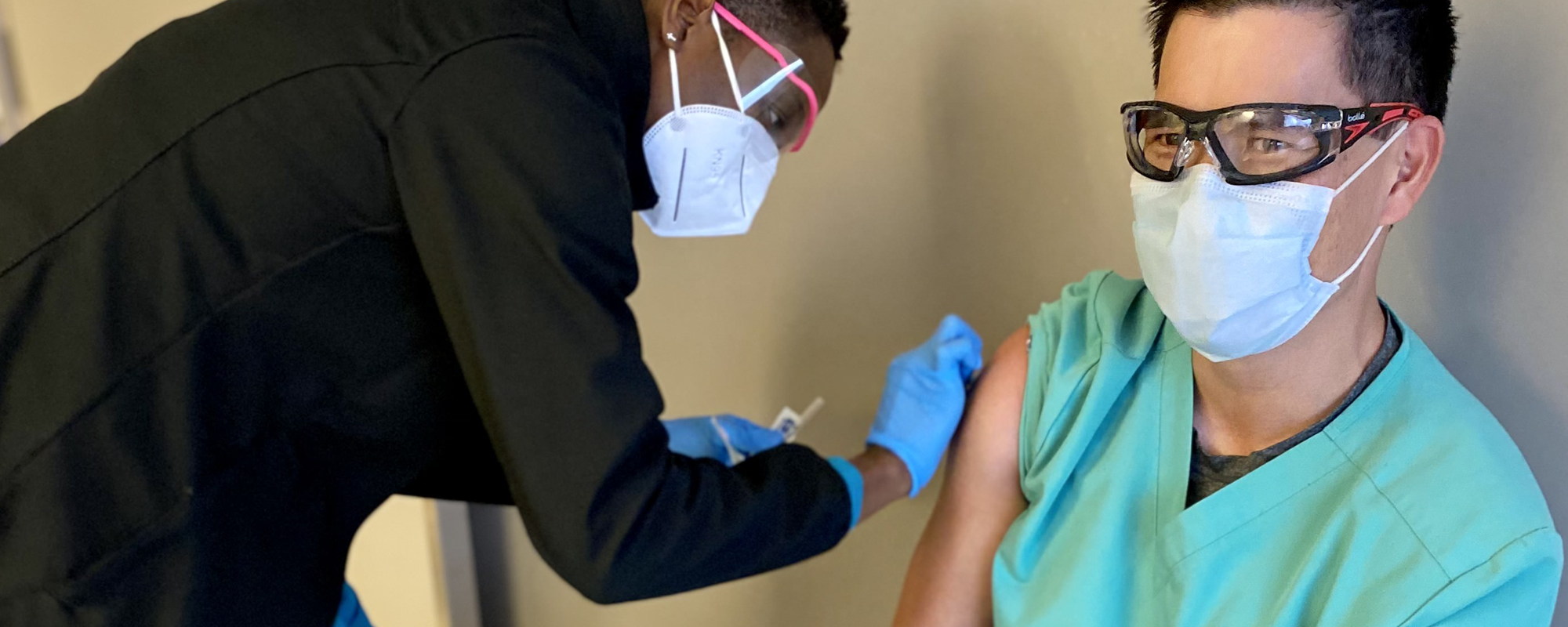The early days of December are usually marked with anticipation and excitement, and while 2020 has been different in many ways, the excitement was palpable in Texas on Dec. 14 as the first shipments of Pfizer’s COVID-19 vaccine began arriving to Texas hospitals.
“Seeing the first doses of vaccine arrive in Texas is an important milestone signaling that a return to our way of life is within sight,” said John Hellerstedt, M.D., Texas Department of State Health Services Commissioner. “We cannot stop short of the finish line. This hope should lift our spirits and strengthen our resolve to do what needs to be done to end the pandemic.”
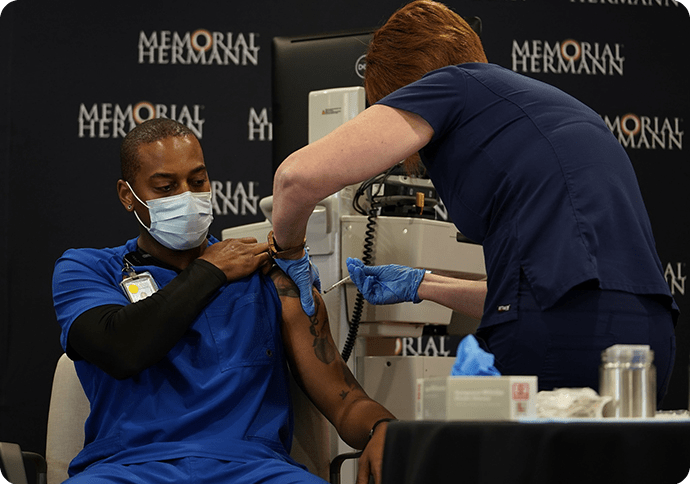
Memorial Hermann’s first COVID-19 vaccine was administered to Robert Luckey, RN, on Dec. 15.
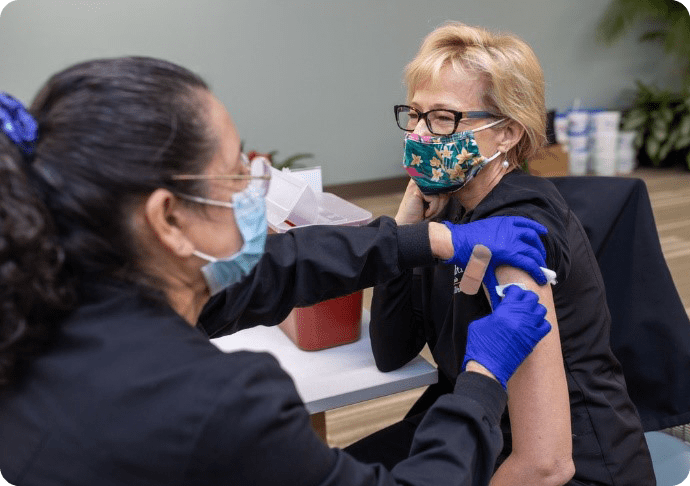
Ruth Berggren, MD, infectious disease specialist with UT Health San Antonio, was one of the first front-line health care providers to receive the Pfizer vaccine in Bexar County Dec. 15. Photo courtesy of UT Health San Antonio.
The Pfizer vaccine received emergency use authorization by the Food and Drug Administration on Friday, Dec. 11, and was quickly followed by a second vaccine manufactured by Moderna, which received emergency use authorization one week later on Dec. 18.
Throughout the week of Dec. 14, nearly a quarter million doses were distributed to 109 hospitals for “first tier” recipients, which include hospital workers who have direct contact with patients; staff of nursing homes or other long-term care facilities who work directly with residents; emergency medical services providers such as paramedics and ambulance drivers; and home health aides who manage vulnerable and high-risk patients.
On Monday, Dec. 14, MD Anderson Cancer Center in Houston, UT Health Austin at the Dell Medical School, Methodist Dallas Medical Center and UT Health San Antonio received the first 19,500 doses of the vaccine. As the delivery trucks carrying the COVID-19 vaccines arrived a few hours after sunrise, they were greeted by cheers, applause and even prayers and blessings.
For Texas’ frontline health care workers, the boxes of vaccines are more than the culmination of Operation Warp Speed. They represent the antidote to a virus that has claimed the lives of 37,000 Texans and has stretched the hospital workforce to unsustainable limits.
“I strongly believe in the science that has gotten us to the point of having this vaccine, and I am so excited and very proud to be one of the first vaccinated,” said Roy Chemaly, chief infection control officer at MD Anderson Cancer Center as he received the first vaccine given at the health system.
Marc Boom, M.D., THA board chair and president and CEO of Houston Methodist, issued a video in mid-December, encouraging frontline health care workers to get vaccinated. “Our responsibility as health care workers is ultimately to protect our patients and to protect each other. Now I urge all of us to lead the way and lead our communities in getting vaccinated.”
“I did it because I want to help my community and someone has to start,” said Stephanie Vasquez, a PACU nurse at UT Health Austin who was among the first health care workers who received the vaccine in Austin.
“We have been fighting this battle against COVID-19 since March,” said Robert Luckey, RN, who works as a nurse in Memorial Hermann-Texas Medical Center’s dedicated COVID-19 Intensive Care Unit. “I’m thrilled there is now a vaccine to help protect us against this virus, and I am very grateful and proud to be among the first in the country to be able to receive it.”
While having an effective vaccine in place provides the first glimmer of hope for a post-COVID-19 world, people must continue to prevent transmission of COVID-19 by wearing a mask and maintaining a social distance from people outside of their household.
“It’ll still be weeks, perhaps months, before it is absolutely available to anyone who chooses to have it, and also in the meantime we need to continue the kinds of things that have gotten us this successful so far,” Dr. Hellerstedt said in remarks from the UPS Distribution Center in Austin.
“We advocated around the clock to get vaccine in the hands of hospitals first,” said Carrie Kroll, vice president of advocacy, quality and public health at the Texas Hospital Association. “We felt the stress and urgency build as COVID-19 showed us its relentless nature and taxed all hospitals nearly to the breaking point. Protecting the frontlines is key to getting us to the other side, and we can’t wait to celebrate the beginning of the end of the COVID-19 pandemic.”
THE FIRST WEEKS OF THE VACCINATION ROLLOUT IN TEXAS
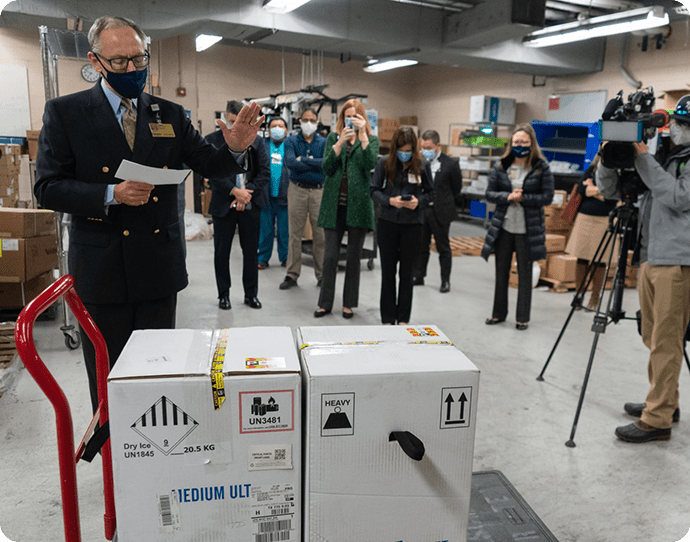
Bob Kidd, head of spiritual care at Houston Methodist, blesses the first shipment of the COVID-19 vaccine. Photo courtesy of Houston Methodist.
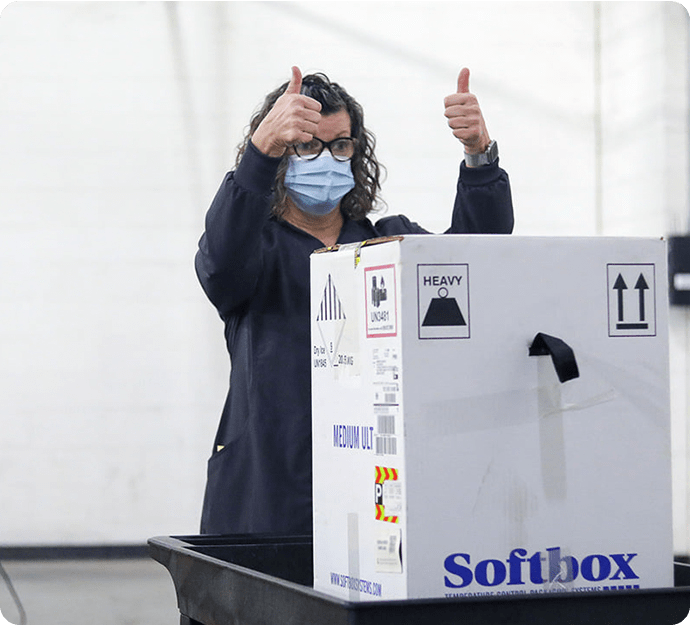
An employee at UT Health Austin receives the first shipment of the COVID-19 vaccines. Photo courtesy of UT Health Austin, Alyssa Martin, photographer.
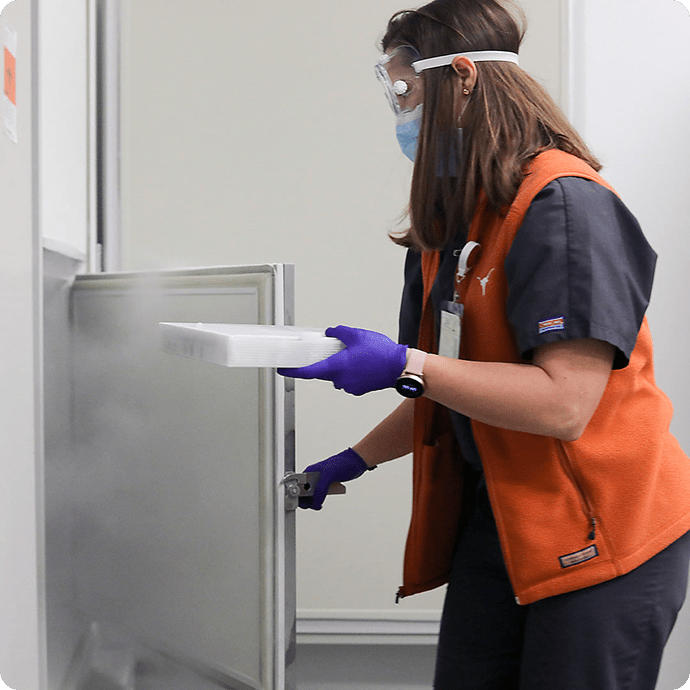
An employee at UT Health Austin stores the first shipment of the COVID-19 vaccines. Photo courtesy of UT Health Austin, Alyssa Martin, photographer.
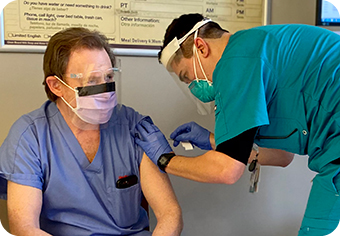
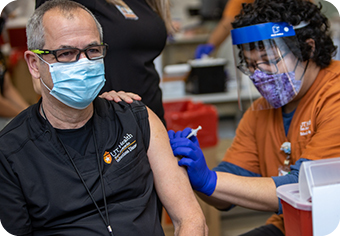
Pat Herlihy, M.D., chief of critical care at CHI St. Luke’s Health was among the first COVID-19 vaccine recipients. Photo courtesy of CHI St. Luke’sTom Patterson, M.D., chief of infectious diseases in the Joe R. and Teresa Lozano Long School of Medicine at UT Health San Antonio, was one of the first front-line health care providers to receive the Pfizer vaccine in Bexar County Dec. 15. Photo courtesy of UT Health San Antonio.
